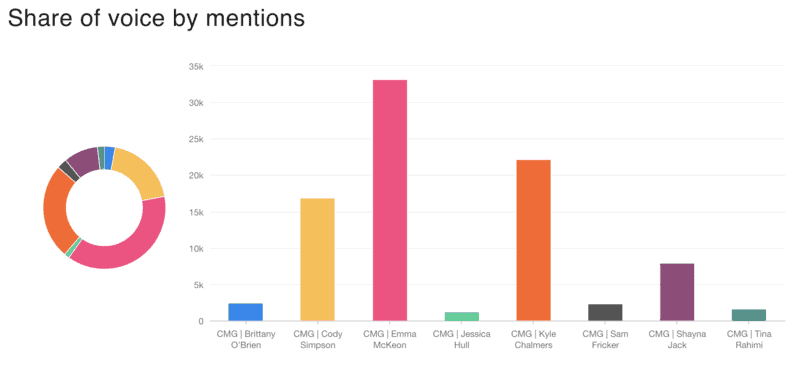Earlier this year, the Commonwealth Games dominated the news cycle headlines and social media discourse, with Australian swimming champions Emma McKeon, Kyle Chalmers and Cody Simpson at the forefront of the conversation.
Media intelligence and data analytics company, Meltwater, analysed the social media and news data of this year’s Commonwealth Games to share a snapshot of the most-talked-about aspects.
Mediaweek spoke to Tim O’Rourke, the Australian director for customer success at Meltwater, about the data and what it can tell us about the current and future sports coverage trends.
Founded in 2001, Meltwater was one of the first companies globally to offer social listening and social media analytics.
“We have proprietary software that tracks all online news content and social media data publicly available,” O’Rourke said.
When analysing this year’s Commonwealth Games data, O’Rourke said the coverage ranged from sporting updates to a deep dive into the private lives of the athletes.
“This year, we have seen the really big athletes get the gold medal-winning coverage, but also everything else surrounding the athletes.
“For example, Kyle Chalmers and all the news and social posts that came out that were unrelated to the pool. You’re seeing so much more uptick from a social media standpoint,” he said.
Throughout the Commonwealth Games, Emma McKeon had a 37% share of voice by combined mentions across social and news media content (33,187), 43% share of voice by Twitter impressions (153M), 33% share of voice across news media and nearly half of overall share of voice (46%) across broadcast media. Additionally, she was the most talked about athlete on WeChat with 54%.
See also: Seven’s Commonwealth Games coverage reaches 11.1 million Australians

Most Popular Aussie Athletes – CMG. Source: Meltwater
McKeon’s involvement in the Commonwealth Games was at times overshadowed by coverage of a ‘love triangle’ involving herself, current partner Cody Simpson and ex-boyfriend Kyle Chalmers, both of whom were in the Australian team in England.
Despite this, O’Rourke said the conversations around McKeon stemmed from her legend status.
“I think for Emma McKeon, because she’s been such a long and storied athlete, her coverage has been increasing because she’s won gold medals over the course of a couple of Olympics and Commonwealth Games. So I think that the coverage for her is just centred around her per legend status in Australia.
“So looking at that, when it comes to global coverage, as well as in Australia, it’s really cool to see just how much she has a global footprint and standing in the athletic world,” O’Rourke added.
In Kyle Chalmers’ case, who had a 25% share of voice by combined mentions across social and news media content, the social media coverage and news coverage shared a different view.
“I think that he [Chalmers] was interesting because much of the news coverage centred around how that particular scandal was being reported in the press.
“On social media, he was getting a ton of support on that topic. And you saw a lot of engagement and influence coming from people who were supportive of his mental health and his ability to handle that particular news cycle while he was competing. So that was the main difference in terms of news versus social for him.”
Looking to the future, Tim O’Rourke said social media coverage will increase as people use less commonly used platforms and as athletes continue to promote their personal brands.
“You’re going to see a lot of athletes looking to sponsorships and ways to promote their brand on socials. So naturally, it will skew more towards more digital channels rather than traditional journalist catch-ups or traditional releases that come from a sporting body.
“We have a lot of people that use channels, even within Australia, like WeChat, who are looking to comment about global sports, that are coming from other social sources that are less common in Australia, “O’Rourke added.
“So, I think you’ll see a rise of channels like TikTok and people wanting to promote themselves or comment on what’s happening in sport on emerging social channels.
“When it comes to the data, we should see athletes using their own profile to build a bigger social footprint and by extension, build the sport as well.”
Top Image: Tim O’Rourke
